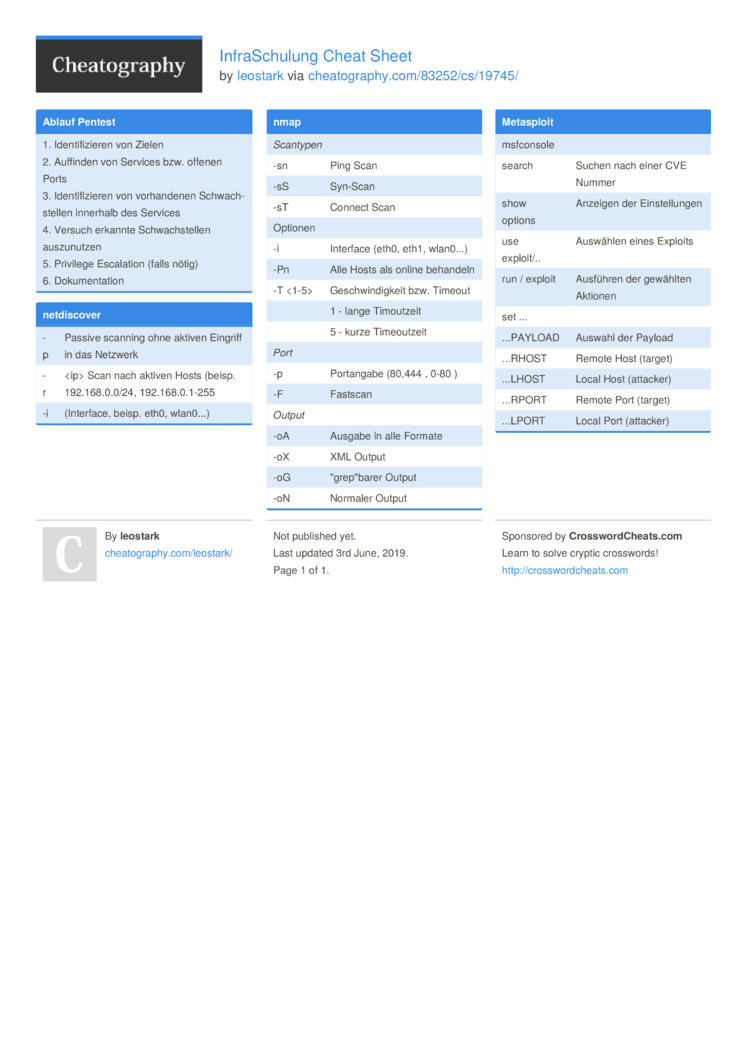XSD Datatype Cheat Sheet
Every information management system needs some way to express primitive datatypes such as integers, numbers, text, dates, or times. For example, does “1” represent a number that can be added with other numbers, or simply text containing the character for the number “1”? Hosts file for a mac.
Since the Semantic Web is built on W3C standards, the Semantic Web uses the same familiar datatypes that the W3C built when standardizing XML.
For convenience, we have included this reference guide on XSD datatypes. Most of the descriptions are taken from the W3C authoritative standard, which can be found at http://www.w3.org/TR/xmlschema-2/#built-in-primitive-datatypes
Prerequisites


In the Semantic Web, XSD datatypes are only useful in the context of working with RDF. If you haven’t read them, you’ll need to read RDF 101 and RDF Nuts & Bolts.
The DB2 cheat sheet includes symbol syntax and methods to help you using DB2. DB2 is a database product from IBM. It is a Relational Database Management System (RDBMS). DB2 is designed to store, analyze, and retrieve the data efficiently. DB2 product is extended with the support of Object-Oriented features and non-relational structures with XML. Common Android Views Cheat Sheet.pdf. Common Android Views Cheat Sheet.pdf. XML Cheat Sheets. Oracle XML support Cheat Sheet (DRAFT) by taotao. Oracle xml database support. This is a draft cheat sheet. It is a work in progress and is not finished yet. Why Oracle XML: XML. Extensible Markup Language. User defined tags. Tags associated w/ the storage of data. Xml:Nothing but the presentation of data.
Subliminal Message Pro (SMP) lets you explore the idea of subliminal messages. Messages up to 80 characters are flashed in the middle of your display. Experience the power of subliminal messages and change your internal programming This powerful and revolutionary new audio is available for anyone to use. Subliminalpro.com is a leader in the field of subliminal programming with years of research and a passion for creating the best possible product. Subliminal message programs. Subliminal messages work by bypassing the conscious and penetrating the subconscious mind with affirmations that invoke or encourage new ways of thinking and changing perception. Although not conclusively proven to work it is thought that subliminal messages gain their potential value by being able to bypass the critical filters of the conscious mind’s awareness.
XSD Datatypes Reference
All XSD datatypes have the namespace http://www.w3.org/2001/XMLSchema#, which is typically shortened using the prefix “xsd”. Often, these datatypes are represented in quotation marks followed by a type identifier as you’ve seen in RDF Nuts & Bolts. For example:
“42”^^xsd:int Assetpostprocessor.
Xml Schema Cheat Sheet


The built-in datatypes are:
Xml Cheat Sheet Pdf
| DataType | Description | Example Representation |
| xsd:string | A character string | Hello World |
| xsd:boolean | A true/false value | True |
| xsd:decimal | Those real numbers which can be represented decimal format | 42.1 |
| There are many built-in types which derive from xsd:decimal. These include: xsd:integer, xsd:positiveInteger. xsd:nonPositiveInteger, xsd:negativeInteger, xsd:nonNegativeInteger, xsd:long, xsd:int, xsd:short, xsd:byte, xsd:unsignedLong, xsd:unsignedInt, xsd:unsignedShort, xsd:unsignedByte | ||
| xsd:float | Patterned after single-precision IEEE 32-bit floating point | 6.0235e-23 |
| xsd:double | Patterned after IEEE 64-bit floating point | 6.0235e-23 |
| xsd:duration | A duration of time. For example, a period of 5 years, 2 months, and 10 days. | P5Y2M10D |
| xsd:dateTime | A date and time together | 2002-05-30T09:30:10.5 |
| xsd:time | An instant of time that recurs every day | 13:04:00 |
| xsd:date | Intervals of exactly one day in length | 1889-09-24 |
| xsd:gYearMonth | A specific Gregorian month in a specific Gregorian year | 1999-05 |
| xsd:gYear | A Gregorian calendar year | 1999 |
| xsd:gMonthDay | A Gregorian date that recurs, specifically a day of the year such as the third of May | –05-03 |
| xsd:gDay | A Gregorian day that recurs, specifically a day of the month such as the 27th of the month | —27 |
| xsd:gMonth | A Gregorian month that recurs every year. For example, June. | –06– |
| xsd:hexBinary | Arbitrary hex-encoded binary data | 0047dedbef |
| xsd:base64Binary | Arbitrary Base64-encoded binary data | VGhpcyBpcyBzb21lIHRleHQh |
| xsd:anyURI | A Uniform Resource Identifier Reference (URI) | http://www.cambridgesemantics.com |
